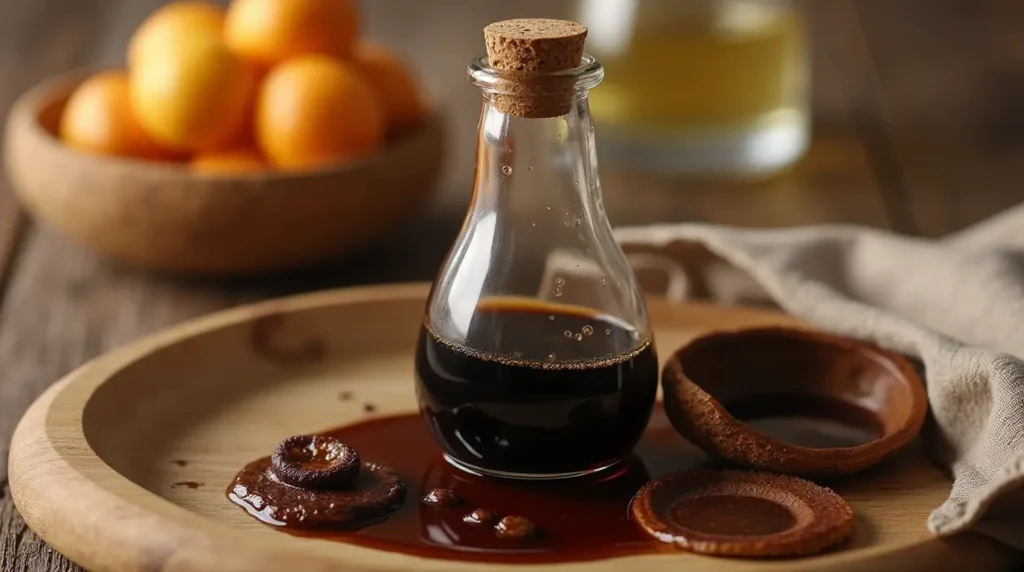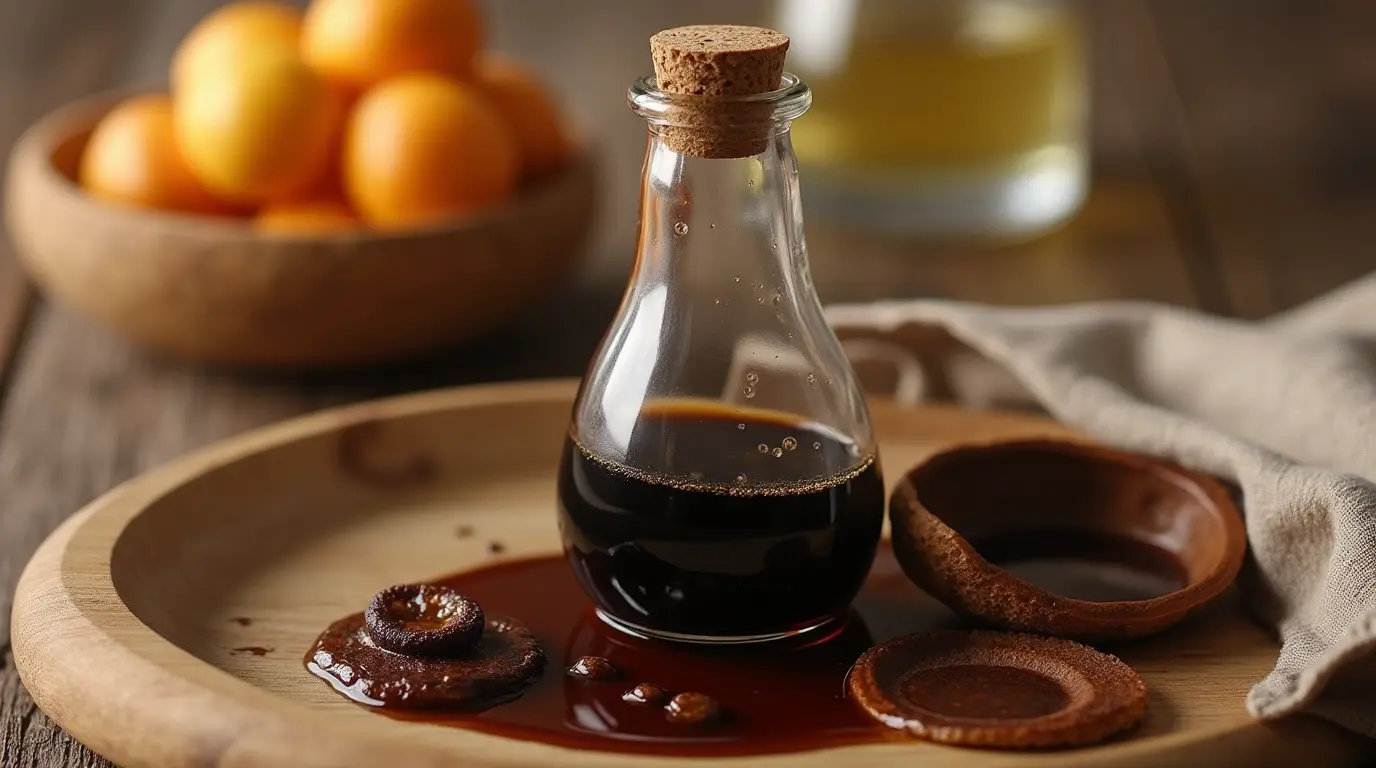




Balsamic vinegar is a unique, flavorful vinegar originating from Italy, particularly the regions of Modena and Reggio Emilia. Unlike regular vinegar, which is typically made from wine or other fruit-based fermentations, balsamic vinegar is made from freshly crushed grape juice, also known as "must." This must is aged for several years in wooden barrels, where it undergoes a natural fermentation process that enhances its depth of flavor. The result is a thick, dark, and syrupy vinegar that has a tangy, sweet, and complex taste profile.
The aging process of balsamic vinegar is key to its distinctive characteristics. Traditional balsamic vinegar, which is made from Trebbiano or Lambrusco grapes, is aged for a minimum of 12 years, and sometimes even much longer. The longer it ages, the more concentrated and flavorful it becomes. The vinegar is aged in a series of wooden barrels made from various types of wood, such as oak, chestnut, and cherry, which add their own flavors to the final product.
Balsamic vinegar offers a taste experience that sets it apart from other types of vinegar. Its flavor is a unique blend of tanginess, sweetness, and acidity, with a smooth, complex undertone. The sweetness comes from the natural sugars in the grape juice, while the acidity is a result of the fermentation process.
Compared to other common vinegars, such as white vinegar, apple cider vinegar, or red wine vinegar, balsamic vinegar is far richer in flavor. Its sweetness gives it a mild and pleasant taste, making it less harsh or overpowering than other vinegars. This balance of sweet and sour makes it versatile for both savory and sweet dishes.
While balsamic vinegar shares some similarities with other vinegars, it is distinct in several key ways:
The specialness of balsamic vinegar lies in its history, production method, and flavor profile.
There are two main types of balsamic vinegar: traditional and commercial. Traditional balsamic vinegar (Aceto Balsamico Tradizionale) is made in small batches, following age-old methods that date back to the 11th century in Italy. It is protected by a PDO (Protected Designation of Origin) status, meaning it can only be produced in specific regions of Italy. This version is pricey, rare, and aged for many years to develop its rich flavor.
Commercial balsamic vinegar, on the other hand, is a more affordable option that is mass-produced and may not undergo the same aging process. It is often made by adding caramel or other sweeteners to speed up the flavor development, which leads to a more vinegar-forward taste than the traditional product.
The production process of balsamic vinegar is a unique combination of fermentation, aging, and blending. The natural sugars from the grape must caramelize as it ferments and ages in wooden barrels, absorbing the flavors of the wood. This multi-step process creates a product that is both acidic and sweet, a rarity among vinegars.
Balsamic-vinegar is often described as an acquired taste. Many first-time users are struck by its sweetness and depth of flavor, which sets it apart from other more commonly used vinegars. Some people find the taste a bit too strong or sweet at first but grow to appreciate it once they see how versatile it is in different dishes.
People who enjoy balsamic-vinegar often note its ability to enhance salads, roasted vegetables, and meats. It adds a distinctive zing to marinades and dressings, and even works well in some dessert recipes.
However, opinions can be divided between those who love its richness and those who prefer the more straightforward, sharp tang of other vinegars. Overall, balsamic-vinegar tends to win people over with its complex flavor and versatility in the kitchen.
When choosing balsamic-vinegar, the best type depends on the intended use and budget:
Balsamic-vinegar is a key ingredient in many delicious recipes, both savory and sweet. Here are some popular dishes that benefit from the unique flavor of balsamic-vinegar:
A classic Italian salad made with fresh mozzarella, tomatoes, basil, and a drizzle of balsamic vinegar. The vinegar adds a tangy contrast to the creamy mozzarella and juicy tomatoes.
This simple yet flavorful dish involves glazing chicken breasts with a mixture of balsamic-vinegar, honey, and garlic. The vinegar creates a sweet-sour sauce that perfectly complements the savory chicken.
Roasting vegetables like carrots, bell peppers, and zucchini with balsamic-vinegar helps caramelize their natural sugars and infuse them with a savory-sweet flavor. It’s a simple yet satisfying side dish.
For a surprising twist on a dessert, marinate strawberries in a bit of balsamic-vinegar and sugar. The vinegar enhances the sweetness of the fruit and adds complexity to the flavor profile.
A simple vinaigrette made with balsamic-vinegar, olive oil, Dijon mustard, garlic, and honey is perfect for dressing salads or drizzling over roasted vegetables.
Balsamic-vinegar is a versatile and flavorful ingredient with a rich history and distinctive taste. Whether you're using it in savory or sweet dishes, its unique balance of acidity and sweetness can elevate any meal. From salads to meats, and even desserts, balsamic-vinegar adds depth and complexity that’s hard to match with other vinegars. Whether you're a first-timer or a seasoned fan, the wide variety of balsamic-vinegars available ensures that there’s something for everyone to enjoy.

